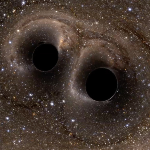"Reliable masses"?
-
 by
JeanTate
by
JeanTate
In the Hangout video, Laura Trouille mentioned that Yanmei Chen (sp?) used spectra to estimate the (stellar?) masses of the post-Q candidates, and that some still do not have "reliable masses".
From reading the summaries, and papers, in the postquench blogspot, it seems the authors used two - possibly three - different methods for estimating the PSGs' masses. In the summary of the Wong et al. paper, there is a link to a GZ forum thread on this topic (wow!); reading that thread suggests that such estimates are heavily model-dependent, and that none are truly robust.
As this project is looking at a fairly unusual kind of galaxy, do we need to go an extra mile to ensure the mass estimates are at least consistent? For example, to what extent do we need to critically examine possible systematics in the method(s), as applied to the control sample?
One possible systematic: the characteristics of the dust in PSGs may differ - in important ways - from those of dust in the control sample.
Posted
-
 by
james_involute
in response to JeanTate's comment.
by
james_involute
in response to JeanTate's comment.
Hmmm - this might explain some unexpected results when playing around with some scatterplots of various properties against mass.
Posted
-
 by
mzevin1
scientist, moderator
by
mzevin1
scientist, moderator
There definitely might be some strange things showing up when plotting mass in tools since some of the galaxies do not have stellar mass data yet. This info will definitely be incorporated before we have the morphological data from classifications and start the data analysis process.
Posted
-
 by
JeanTate
by
JeanTate
The Explore view in DR10 (about which there are already two Galaxy Zoo blog posts, SDSS Data Release 10 and Galaxy Zoo 2 and Using Galaxy Zoo Classifications – a Casjobs Example ) has a section in the left-hand panel called "Fit Parameters".
At least six (!) of those seem to include estimates of stellar mass!
For example, the second one - StarFormingPort or, stellarMassStarFormingPort in full - is described as "Estimated stellar masses for SDSS and BOSS galaxies (Portsmouth method, star-forming model).", in the Schema Broswer:
Stellar masses using the method of Maraston et al. (2006). These fit stellar evolution models to the SDSS photometry, using the known BOSS redshifts. The star-formation model uses a metallicity (specified in the 'metallicity' column) and one of three star-formation histories: constant, truncated, and exponentially declining ('tau'). The type, and relevant time scale, are given in the 'SFH' column. The 'age' listed gives the start time for the onset of star-formation in each model. In this table we assume the Kroupa IMF.
For AGS00001mu (DR10 image below; other images in this Talk thread), the logMass (or similar) estimates are:
- 10.5 (stellarMassStarFormingPort)
- 10.53 (stellarMassPassivePort)
- 10.8662871907436 (stellarMassPCAWiscBC03)
- 10.8659698158008 (stellarMassPCAWiscM11)
- 10.700563800765 (stellarMassFSPSGranWideDust and stellarMassFSPSGranWideNoDust)
- 10.8164447106664 (stellarMassFSPSGranEarlyNoDust)
Posted